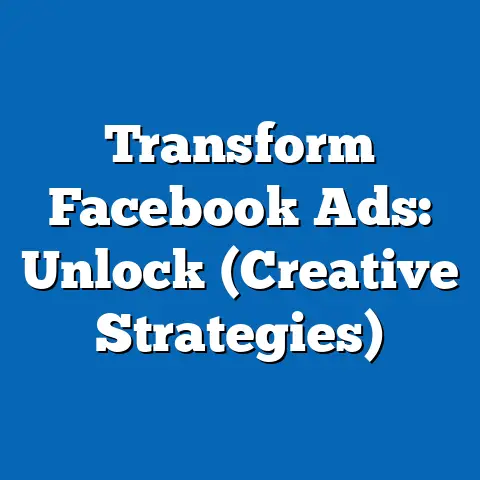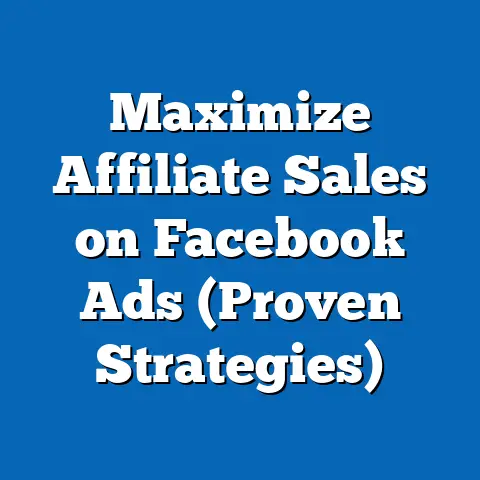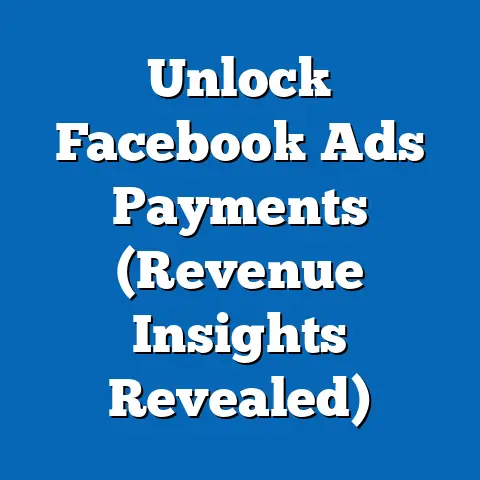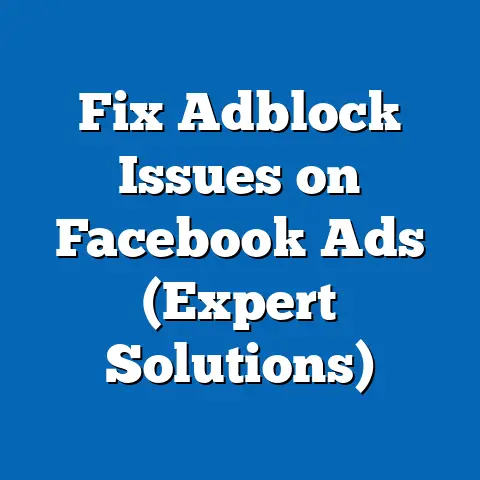Mastering fb ad Set Strategies (Expert Insights Revealed)
Did you know that over 2.9 billion people use Facebook every month? That makes it the largest social media advertising platform globally! With such a massive audience, Facebook offers unparalleled opportunities for businesses to connect with potential customers. However, simply creating a Facebook ad and hoping for the best is rarely effective. To truly succeed and maximize your advertising ROI, you need to master Facebook ad set strategies.
Understanding Facebook Ad Sets
Think of your Facebook advertising campaign as a finely tuned machine. The campaign itself is the overall engine, defining your overarching objective (e.g., driving website traffic, generating leads). Within that engine, ad sets are the crucial components that determine who sees your ads, where they see them, when they see them, and how much you spend to reach them.
An ad set, housed within the Facebook Ads Manager, is essentially a container for your ads. It dictates the specific parameters for a group of ads, allowing you to tailor your messaging and targeting to different segments of your audience. Without well-defined ad sets, you’re essentially throwing your ads into the digital void, hoping they’ll land in the right place.
Why are ad sets so important?
- Targeting Precision: Ad sets allow you to hyper-target your audience based on demographics, interests, behaviors, and even custom audiences (more on this later). This ensures your ads are shown to the people most likely to be interested in your product or service.
- Budget Control: You can set specific budgets for each ad set, allowing you to allocate resources strategically and optimize your spending based on performance.
- Scheduling Flexibility: Ad sets enable you to schedule your ads to run at specific times of day or on certain days of the week, maximizing their impact based on audience behavior.
- Placement Optimization: You can choose where your ads appear (e.g., Facebook News Feed, Instagram Stories, Audience Network) within each ad set, ensuring they’re seen in the most relevant and engaging contexts.
Key Components of Ad Sets:
- Audience Targeting: Defining the characteristics of the people you want to reach.
- Placements: Selecting where your ads will be displayed.
- Budget: Determining how much you’re willing to spend on each ad set.
- Schedule: Setting the dates and times your ads will run.
Takeaway: Ad sets are the foundation of successful Facebook advertising campaigns. They provide the control and flexibility you need to reach the right audience, optimize your spending, and maximize your ROI.
The Importance of Audience Targeting
In my years of experience with Facebook Ads, I’ve learned that audience targeting is the single most critical factor in determining campaign success. You can have the most visually stunning ad creative and the most compelling copy, but if you’re showing it to the wrong people, it’s all for naught.
Facebook offers a wealth of targeting options, allowing you to reach incredibly specific segments of its vast user base. Let’s explore some of the key categories:
- Demographics: Target users based on age, gender, education level, job title, relationship status, location, and more.
- Interests: Reach people who have expressed interest in specific topics, hobbies, or brands. This is based on their Facebook activity, such as liking pages, joining groups, or engaging with content.
- Behaviors: Target users based on their online and offline behaviors, such as purchase history, device usage, travel habits, and more. This data is often sourced from Facebook’s partnerships with third-party data providers.
- Custom Audiences: Create your own audiences based on your existing customer data, such as email lists, website visitors, or app users. This allows you to retarget people who have already interacted with your business.
- Lookalike Audiences: Expand your reach by finding new people who share similar characteristics with your existing customers. Facebook analyzes your custom audiences and identifies users who are likely to be interested in your product or service.
Creating Buyer Personas:
Before you dive into the targeting options, it’s crucial to develop detailed buyer personas. A buyer persona is a semi-fictional representation of your ideal customer, based on research and data about your existing and potential customers.
Here’s what a buyer persona should include:
- Demographics: Age, gender, location, income, education, job title.
- Psychographics: Values, interests, lifestyle, personality.
- Goals: What are they trying to achieve?
- Challenges: What are their pain points?
- Motivations: What drives their purchasing decisions?
- Online Behavior: Where do they spend their time online? What social media platforms do they use?
By creating detailed buyer personas, you can gain a deep understanding of your target audience and tailor your ad targeting accordingly. For example, if you’re selling high-end cycling gear, your buyer persona might be “Avid Athlete Amy,” a 35-year-old female marketing manager who enjoys competitive cycling, reads cycling blogs, and follows cycling brands on social media.
Refining Audience Targeting for Maximum Impact:
- Start Broad, Then Narrow Down: Begin with a broad audience and gradually refine your targeting based on performance data. Use Facebook’s audience insights tool to identify the demographics, interests, and behaviors that are most responsive to your ads.
- Layer Targeting Options: Combine multiple targeting options to create highly specific audiences. For example, you could target women aged 25-45 who are interested in yoga and have purchased athletic apparel online in the past year.
- Exclude Irrelevant Audiences: Exclude audiences that are unlikely to be interested in your product or service. This will help you avoid wasting ad spend on unqualified leads.
- Leverage Lookalike Audiences: Use your existing customer data to create lookalike audiences and expand your reach to new potential customers.
- Retarget Website Visitors: Retarget people who have visited your website but haven’t made a purchase. Show them ads that feature the products they viewed or offer them a special discount.
Takeaway: Audience targeting is the cornerstone of successful Facebook advertising. By creating detailed buyer personas and leveraging Facebook’s advanced targeting options, you can ensure your ads are seen by the people most likely to convert.
Budgeting Strategies for Ad Sets
Setting the right budget for your ad sets is a delicate balancing act. You want to spend enough to reach your target audience effectively, but you don’t want to blow your entire marketing budget on a single campaign.
Daily vs. Lifetime Budgets:
- Daily Budget: This is the average amount you’re willing to spend each day on your ad set. Facebook will aim to spend this amount consistently, but it may fluctuate slightly depending on audience availability and ad performance. I often use daily budgets for ongoing campaigns where I want consistent results.
- Lifetime Budget: This is the total amount you’re willing to spend on your ad set over its entire duration. Facebook will optimize your spending to ensure you get the most results within your budget, even if it means spending more on some days than others. Lifetime budgets are ideal for campaigns with a specific start and end date, such as promotional events or seasonal sales.
Allocating Budgets Across Multiple Ad Sets:
If you’re running multiple ad sets, it’s important to allocate your budget strategically. Here are a few approaches:
- Equal Allocation: Divide your budget equally among all ad sets. This is a good starting point if you’re unsure which ad sets will perform best.
- Performance-Based Allocation: Allocate more budget to the ad sets that are generating the best results. This allows you to maximize your ROI by focusing on the most effective targeting and messaging.
- Targeted Allocation: Allocate different budgets to ad sets based on their strategic importance. For example, you might allocate a larger budget to ad sets targeting your most valuable customer segments.
Analyzing Historical Data to Inform Budget Decisions:
Before setting your budgets, take a look at your historical data to identify trends and patterns. Which audiences have been most responsive to your ads in the past? Which ad placements have generated the best results? Use this information to inform your budget decisions and allocate your resources accordingly.
The Importance of A/B Testing for Budget Optimization:
A/B testing is a powerful tool for optimizing your budget allocation. Create multiple ad sets with different targeting options, ad creatives, or bidding strategies, and then track their performance to see which ones generate the best results. Once you’ve identified the winning variations, allocate more budget to those ad sets and scale your campaign.
I once ran an A/B test for a client selling online courses. We created two ad sets: one targeting users interested in general business topics, and another targeting users interested in specific niches like marketing and finance. The niche-targeted ad set generated significantly higher conversion rates and lower cost-per-acquisition, so we reallocated the budget to focus on that audience, resulting in a 30% increase in overall campaign ROI.
Takeaway: Budgeting is not a set-it-and-forget-it task. It requires ongoing monitoring, analysis, and optimization. By understanding the different budget options, allocating your resources strategically, and leveraging A/B testing, you can maximize your ROI and achieve your advertising goals.
Scheduling and Timing
Timing is everything, especially when it comes to advertising. Showing your ads at the right time can significantly increase their impact and improve your overall campaign performance.
The Importance of Ad Scheduling:
Ad scheduling allows you to control when your ads are displayed to your target audience. This can be particularly useful if you know that your audience is more active online at certain times of day or on certain days of the week.
Different Strategies for Scheduling Ads:
- Running Ads Continuously: This is the default option, where your ads run 24/7 until you manually pause them. This is a good option if you want to maintain consistent brand awareness or if you don’t have specific data about your audience’s online behavior.
- Setting Specific Start and End Dates: This allows you to run your ads for a specific period of time, such as during a promotional event or seasonal sale.
- Custom Scheduling: This allows you to specify the exact days and times your ads will run. This is the most granular option and is ideal for campaigns where you have detailed data about your audience’s online behavior.
Expert Recommendations on the Best Times to Run Ads:
While there’s no one-size-fits-all answer to the question of when to run ads, here are some general recommendations based on industry benchmarks and audience behavior patterns:
- Weekdays vs. Weekends: In general, weekdays tend to be better for reaching professionals and business-related audiences, while weekends are better for reaching consumers and leisure-related audiences.
- Morning vs. Afternoon vs. Evening: The best time of day to run ads depends on your target audience and the type of product or service you’re selling. For example, ads for coffee shops might perform best in the morning, while ads for restaurants might perform best in the evening.
- Industry-Specific Benchmarks: Research industry benchmarks to identify the best times to run ads for your specific niche. For example, the travel industry often sees increased engagement on weekends, while the education industry might see higher engagement during the week.
Leveraging Facebook’s Data:
Facebook provides valuable data about your audience’s online behavior, including when they’re most active on the platform. Use this data to inform your ad scheduling decisions and optimize your campaign performance.
Takeaway: Don’t underestimate the power of ad scheduling. By carefully considering your audience’s online behavior and leveraging Facebook’s data, you can significantly improve your ad performance and maximize your ROI.
Ad Placements and Their Impact
Where your ads appear on Facebook can have a significant impact on their performance. Facebook offers a variety of ad placements, each with its own strengths and weaknesses.
The Various Ad Placements Available on Facebook:
- Facebook News Feed: This is the most common ad placement and appears directly in users’ news feeds alongside organic content from friends and family.
- Facebook Right Column: This placement appears in the right-hand column of the Facebook website. It’s typically used for smaller, less visually intensive ads.
- Facebook Instant Articles: This placement appears within articles published on Facebook’s Instant Articles platform.
- Facebook In-Stream Videos: This placement appears within videos that users are watching on Facebook.
- Facebook Marketplace: This placement appears in the Facebook Marketplace, where users can buy and sell items.
- Facebook Stories: This placement appears in the Stories section of the Facebook app.
- Instagram Feed: This placement appears directly in users’ Instagram feeds alongside organic content.
- Instagram Stories: This placement appears in the Stories section of the Instagram app.
- Audience Network: This placement allows you to extend your reach beyond Facebook and Instagram to a network of third-party websites and apps.
Automatic Placements vs. Manual Placements:
- Automatic Placements: This is the default option, where Facebook automatically selects the best placements for your ads based on your campaign objectives and budget. This is a good option if you’re unsure which placements will perform best or if you want to save time and effort.
- Manual Placements: This allows you to manually select the placements where you want your ads to appear. This is a good option if you have specific data about which placements are most effective for your target audience.
Advantages of Automatic Placements:
- Simplicity: Easy to set up and manage.
- Optimization: Facebook’s algorithm automatically optimizes your ad delivery across different placements.
- Reach: Can help you reach a wider audience across different platforms and channels.
Advantages of Manual Placements:
- Control: Allows you to choose the placements that are most relevant to your target audience.
- Customization: Enables you to tailor your ad creatives and messaging to specific placements.
- Efficiency: Can help you reduce wasted ad spend by focusing on the most effective placements.
Takeaway: Ad placements play a crucial role in determining the success of your Facebook advertising campaigns. By understanding the different placement options and choosing the right ones for your target audience, you can significantly improve your ad performance and maximize your ROI.
Analyzing and Optimizing Ad Set Performance
Running a Facebook ad campaign is not a one-time task; it’s an ongoing process of analysis and optimization. To ensure your ad sets are performing at their best, you need to regularly track key metrics, interpret the data, and make informed decisions about scaling or pausing underperforming campaigns.
Key Metrics to Track for Ad Set Performance:
- Reach: The number of unique people who saw your ads.
- Impressions: The number of times your ads were displayed.
- Click-Through Rate (CTR): The percentage of people who clicked on your ads after seeing them.
- Cost Per Click (CPC): The average cost you pay for each click on your ads.
- Conversion Rate: The percentage of people who took a desired action (e.g., made a purchase, signed up for a newsletter) after clicking on your ads.
- Cost Per Acquisition (CPA): The average cost you pay for each conversion.
- Return on Ad Spend (ROAS): The amount of revenue you generate for every dollar you spend on advertising.
The Importance of Regular Analysis and Optimization:
Facebook’s algorithm is constantly learning and adapting, so it’s important to regularly monitor your ad set performance and make adjustments as needed. This will help you stay ahead of the curve and ensure your ads are always performing at their best.
Interpreting Data and Making Informed Decisions:
- Identify Trends: Look for patterns in your data to identify which ad sets are performing well and which ones are underperforming.
- Analyze Demographics: Determine which demographics are most responsive to your ads.
- Evaluate Placements: Assess which ad placements are generating the best results.
- Test Different Creatives: Experiment with different ad creatives and messaging to see what resonates best with your audience.
Scaling or Pausing Underperforming Ad Sets:
- Scaling: If an ad set is performing well, consider increasing its budget to reach a wider audience.
- Pausing: If an ad set is underperforming, consider pausing it to avoid wasting ad spend.
Takeaway: Analyzing and optimizing your ad set performance is essential for maximizing your ROI and achieving your advertising goals. By regularly tracking key metrics, interpreting the data, and making informed decisions, you can ensure your ad sets are always performing at their best.
Advanced Strategies for Mastering Ad Sets
Once you’ve mastered the fundamentals of Facebook ad sets, you can start exploring advanced strategies to take your campaigns to the next level.
Dynamic Ads:
Dynamic ads automatically show the most relevant products to each user based on their browsing history and interests. This can significantly improve your conversion rates and ROAS.
Multi-Product Ads:
Multi-product ads allow you to showcase multiple products in a single ad unit. This is a great way to promote a wider range of products and increase your chances of making a sale.
Sequential Retargeting:
Sequential retargeting involves showing users a series of ads in a specific order, based on their behavior. This allows you to guide them through the sales funnel and increase their likelihood of converting.
Leveraging Facebook’s Machine Learning and Algorithm Capabilities:
Facebook’s machine learning algorithms are constantly learning and improving, so it’s important to leverage these capabilities to optimize your ad delivery and targeting.
Expert Tips and Tricks:
- Use Custom Conversions: Track specific actions that users take on your website, such as adding items to their cart or submitting a lead form.
- Leverage Facebook Pixel: Install the Facebook Pixel on your website to track user behavior and create retargeting audiences.
- Stay Up-to-Date: Keep up with the latest Facebook advertising features and best practices.
Takeaway: By implementing these advanced strategies, you can take your Facebook advertising campaigns to the next level and achieve even greater success.
Conclusion
Mastering Facebook ad set strategies is essential for businesses looking to optimize their advertising efforts, increase ROI, and reach their target audiences effectively. By understanding the key components of ad sets, leveraging advanced targeting options, and continuously analyzing and optimizing your campaigns, you can unlock the full potential of Facebook advertising.
Don’t be afraid to experiment with different strategies and tactics to see what works best for your business. The digital landscape is constantly evolving, so it’s important to stay agile and adapt your approach as needed.
Call to Action
Now that you’re armed with these expert insights, I encourage you to start implementing these strategies in your next Facebook advertising campaign. By taking control of your ad sets and optimizing your targeting, budgeting, scheduling, and placements, you can drive better results and achieve your marketing objectives. Good luck!






